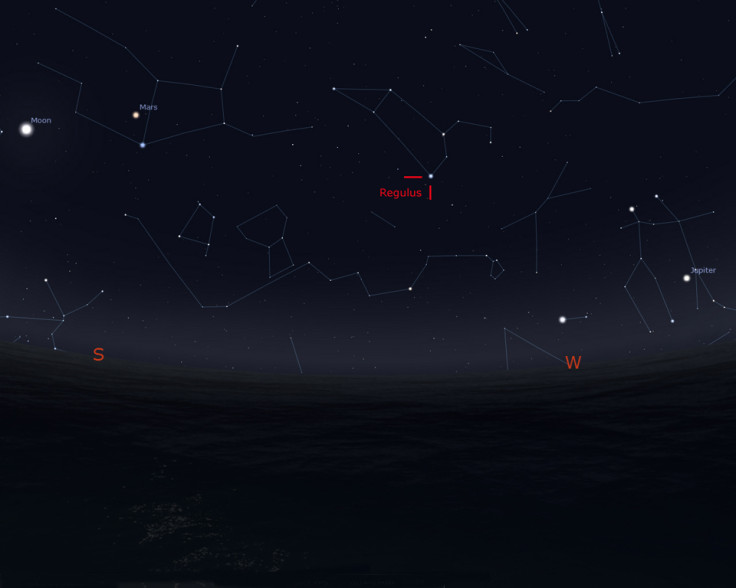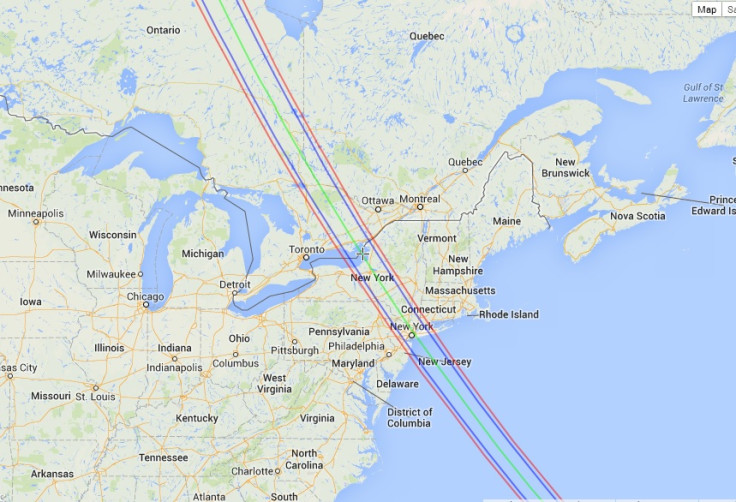Rare Asteroid Occultation: Watch 163 Erigone Block Out Bright Star Regulus Live Online
An extremely rare space event will take place on 20 March, where an asteroid eclipses a star, blocking the light it emits.
The asteroid 163 Erigone will eclipse the bright star Regulus in the early hours of Thursday morning, an event known as asteroid occultation.
While people in New York and surrounding areas will be able to see the celestial event by looking at the night sky, people in other parts of the world can watch live online.
The Slooh Telescope will be recording the event and broadcasting live online via its YouTube channel.
Astronomers believe 163 Erigone will pass in front of Regulus at 2.07am EDT (6.07am GMT). Regulus is one of the brightest stars in the springtime constellation Leo, but the faint asteroid will pass it so directly, its light will be blocked from view for up to 12 seconds.
According to the International Occultation Timing Association (IOTA), Erigone measures 72m in diameter and is travelling over 100 million miles from Earth's surface.

It will block out the star along a path across North East US and East Canada: "In the case of an occultation, the combined light of the asteroid and the star will drop by 11.1 mag to 12.4 mag (the magnitude of the asteroid) for at most 14.3 seconds."
Explaining why the asteroid is so special, IOTA said: "Astronomers have been predicting occultations of stars by asteroids for almost 40 years, and Regulus is the brightest star to ever be predicted to be occulted by a sizeable asteroid anywhere in the USA. So it really is likely to be a once-in-a-lifetime experience for most who live within the path.
"Since Regulus is about 4 million times farther away from us than the asteroid, you can imagine that many factors need to be properly aligned for this event to be visible from our planet. First the asteroid must pass in front of the star. Then the shadow of the asteroid must fall on Earth in an area where it is night, and of course the sky must be clear (frequently not the case in March in the Northeast part of the USA)."

"The prediction for Erigone and Regulus is expected to be extremely accurate," said the IOTA.
The association also noted that the occultation of Regulus is similar to a solar eclipse but more subtle. "We usually have to wait many years before any particular asteroid passes in front of a star bright enough to easily be seen without a telescope. The temporary disappearance of a star as bright as Regulus behind an all-but-invisible asteroid is thus a rare and beautiful occurrence."
© Copyright IBTimes 2025. All rights reserved.






















